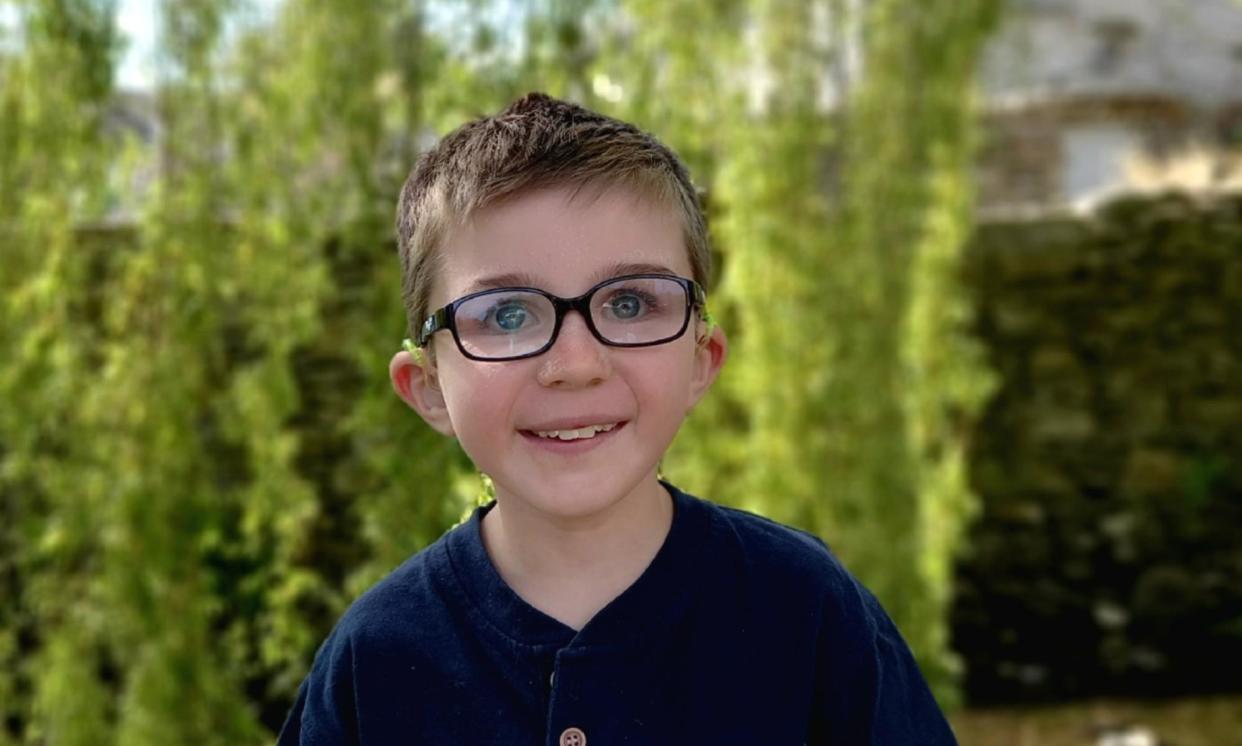Toby lives with childhood dementia. Limited funding in Australia is leaving families without hope

For Nicole the hardest part of her son Toby’s childhood dementia is its regressive nature.
“Having a child, watching them grow, watching them achieve and then watching that slowly be unpicked until there’s nothing left. To me, that is what makes it different, watching someone stage by stage die, parts of them dying. It’s a very slow and very cruel disease,” Nicole said.
Every three days, a baby is born in Australia with a childhood dementia disorder. Caused by any one of more than 100 rare genetic diseases such as Tay-Sachs disease, Hunter syndrome and juvenile Parkinson’s disease, each childhood dementia is characterised by a different inherited genetic mutation but united by the gradual degradation they cause in young brains – and the lack of treatments.
As the disease progresses, children lose abilities like speaking, walking, hearing and sight, and often suffer from debilitating seizures. Half of all children with dementia die before the age of 10, and 70% of them will die before they reach adulthood.
While death rates from childhood cancer in Australia almost halved in the 20 years between 1997 and 2017, there has been no improvement in survival rates for children with dementia.
Related: ‘You mean there’s nothing?’ The families fighting for their children with dementia
A new report by the Childhood Dementia Initiative, State of Childhood Dementia in Australia 2024, released on Monday at Parliament House in Canberra, highlights why.
“The lack of research progress means that families have little hope for improvement in their children’s conditions. This stark reality contrasts sharply with the hope offered to families facing other paediatric conditions, where ongoing research and clinical trials provide a sense of possibility for the future,” the report said.
Neuroscientist Prof Peter Schofield, part of the initiative’s scientific and medical advisory committee, said “survival rates for children with cancer have risen to 84% and there is concerted action to achieve 100%. Childhood dementia, in comparison, sits at 0% survival and children are suffering and dying.”
Each year in Australia there are 91 deaths from childhood dementia, and 92 deaths from childhood cancer.
One hundred per cent of children with cancer in Australia have an opportunity to participate in a clinical trial or experimental treatment. Despite having the same annual death rate, only 2% of kids with childhood dementia have clinical trials available to them to participate in to improve quality and length of life.
Kids with childhood dementia also miss out on clinical trials due to delayed diagnosis, as many of these trials have narrow recruitment criteria, with age cutoffs because halting neurodegeneration is extremely difficult once it has started.
“Early diagnosis is crucial for children with childhood dementia disorders to ensure they can access potential treatments and clinical trials,” the report said.
The Australian government was the first in the world to commit targeted funding for childhood dementia research – the health minister Mark Butler invited families to take part in the project in April led by the Childhood Dementia Initiative partnering with researchers from the University of NSW and The Sydney Children’s Hospital Network.
However, the report said the investment into the group of conditions is still limited compared to other conditions. Just over $23m was directed to childhood dementia in the period 2017 - 2023, compared to $154m received in funding for childhood cancer research during that same period.
The underinvestment on a per-patient basis translates to 4.6 times more research funding being directed to childhood cancer than to childhood dementia, the report found.
Prof Kaarin Anstey, a senior principal research scientist at Neuroscience Research Australia, who was not part of the report, said “this is a highly significant report outlining clearly the prevalence and disease burden of childhood dementia, as well as the lack of research and services for affected children and their families”.
“Childhood dementia has been poorly recognised and understood in the past. I hope this will provide the impetus for the wider health sector and government to deliver on the recommendations of the report to develop a national strategy and improved care, support and education about childhood dementia,” Anstey said.


